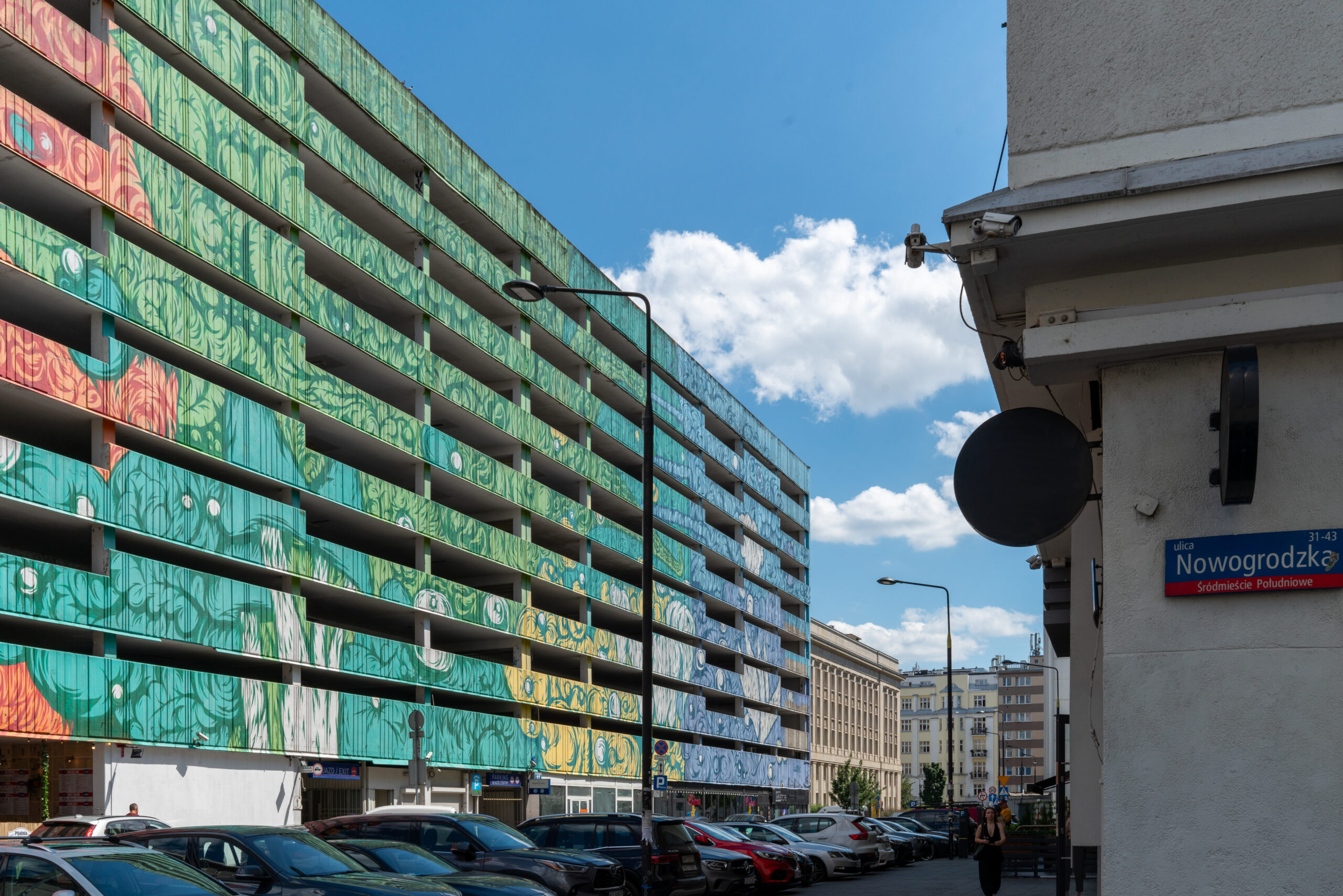Parkingowa Polen
A future vision of what this garage could look like
if used as an urban farm.

Adress:
00-518 Warszawa, Poland
Garage size:
16 000 m²
Floor size:
2000 m²
Floors:
8
SWOT Analysis
Parkingowa Street benefits from excellent accessibility, mixed-use development, and strong public transportation. However, it faces challenges like limited green spaces, traffic congestion, and aging infrastructure. There are significant opportunities through urban revitalization, cultural and commercial development, and sustainable mobility projects. Still, risks include overdevelopment, economic fluctuations, and regulatory hurdles.
Strengths
Central Location:
Situated in the inner city, Parkingowa Street benefits from proximity to major business centers, cultural institutions, and transportation hubs, enhancing its accessibility and appeal.
Mixed-Use Development:
The area features a blend of residential, commercial, and office spaces, fostering a vibrant urban environment.
Public Transportation Access:
Excellent connectivity through buses, trams, and nearby metro stations facilitates easy movement for residents and visitors.
Weaknesses
Limited Green Spaces:
The dense urban fabric may lack sufficient green areas, impacting residents’ quality of life and environmental comfort.
Traffic Congestion:
High vehicle density can lead to congestion, noise, and
air pollution, detracting from the area’s livability.
Aging Infrastructure:
Some buildings and public amenities may require modernization to meet current standards and expectations.
Opportunities
Urban Revitalization Initiatives:
Aligning with Warsaw’s development strategies, there are opportunities to enhance public spaces, infrastructure, and sustainability measures in the area.
Cultural and Commercial Development: Leveraging the central location to attract cultural events, businesses, and tourism can stimulate economic growth.
Sustainable Mobility Projects:
Implementing bike lanes, pedestrian zones, and eco-friendly transport options can improve environmental quality and urban experience.
Threats
Overdevelopment Risks:
Uncontrolled development could strain existing infrastructure and alter the neighborhood’s character.
Economic Fluctuations:
Economic downturns may impact investment and development projects in the area.
Regulatory Challenges:
Navigating zoning laws and preservation regulations can pose obstacles to redevelopment efforts.
